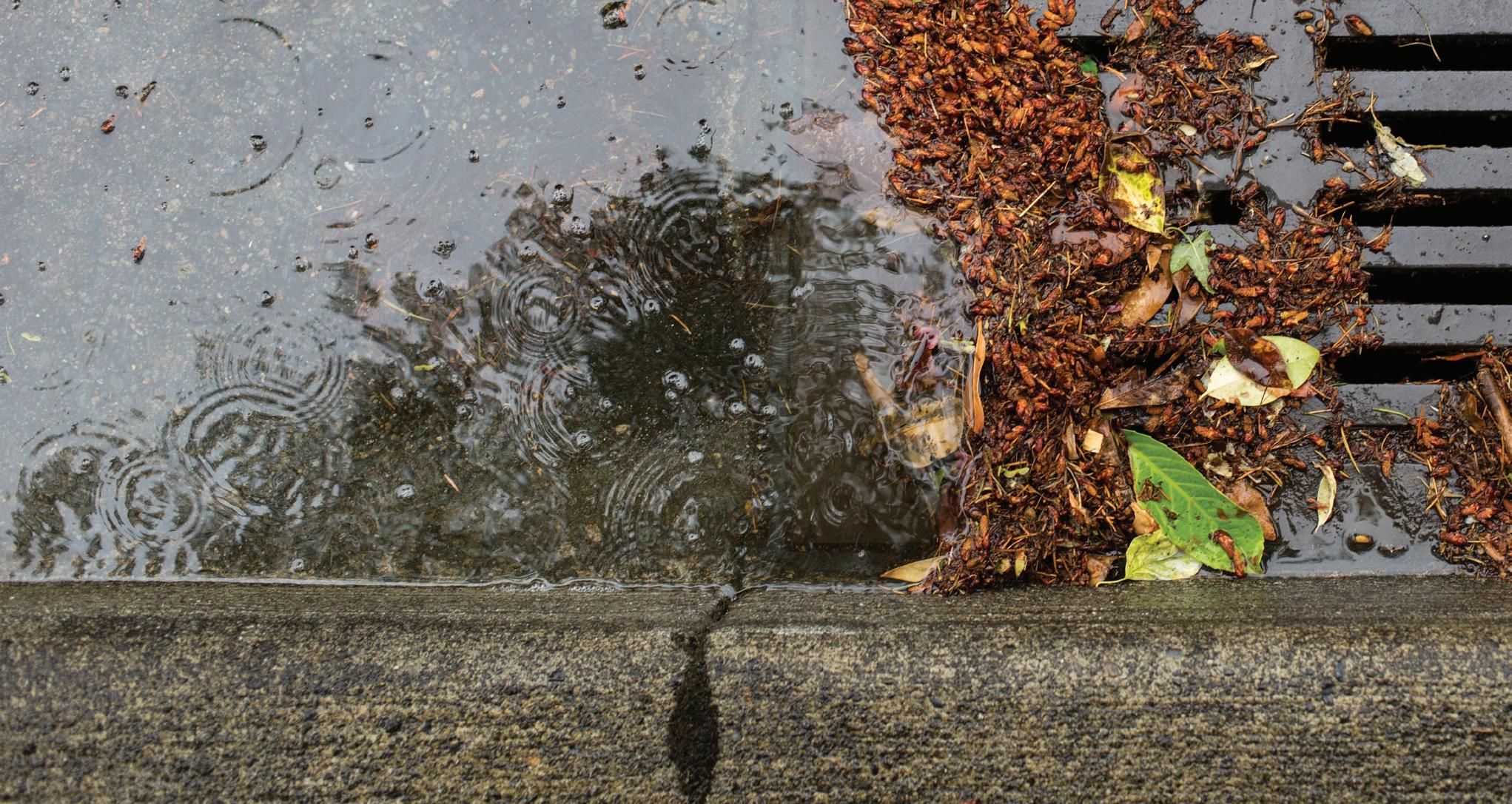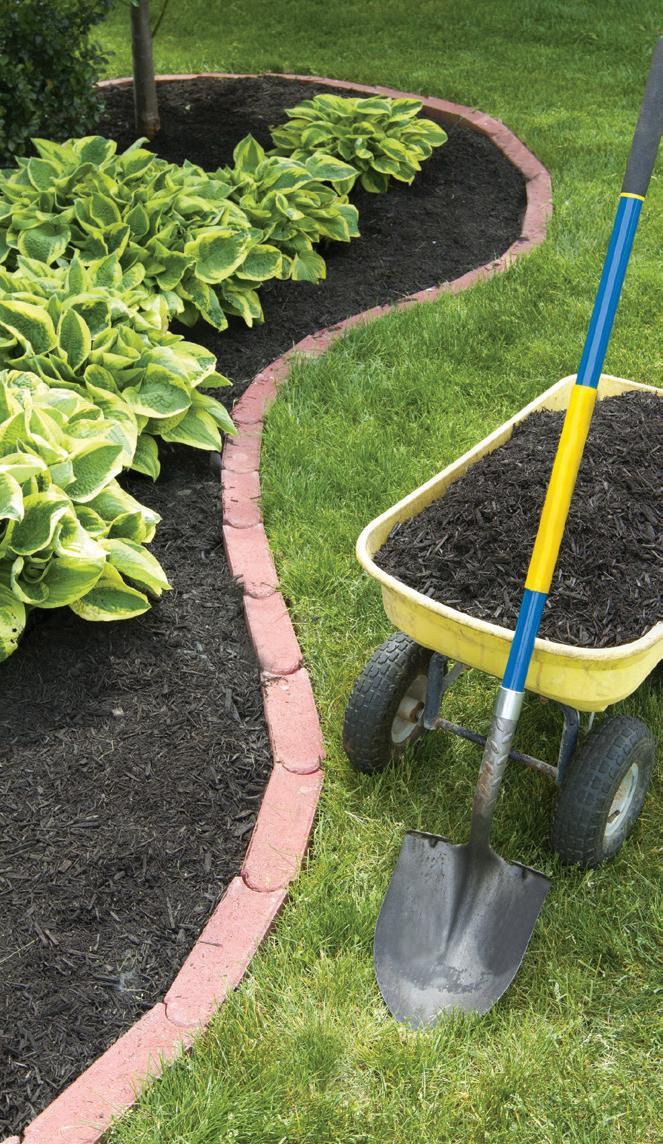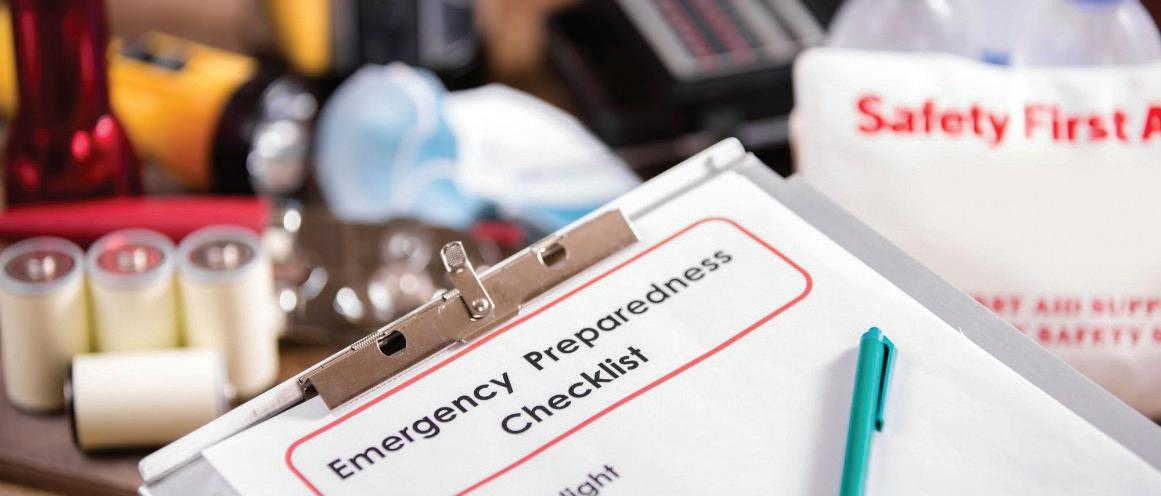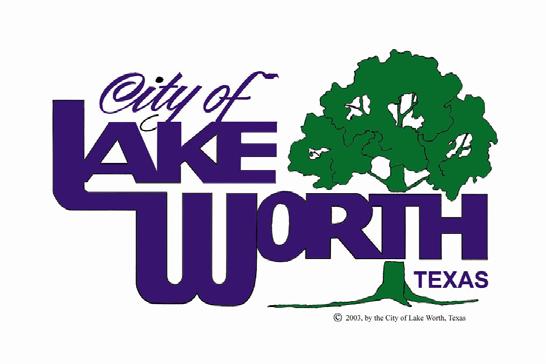
7 minute read
Public Works
PAGE SECTION TITLE HERE PUBLIC WORKS
Public
Advertisement
WORKS
CITY OF LAKE WORTH’S STORMWATER MANAGEMENT PROGRAM
The City of Lake Worth’s City Council has approved a Stormwater Management Program which will help to improve drainage throughout the city and help protect our environment. During a rain event, rainwater flows over the ground and is called runoff or stormwater. In the process, stormwater picks up pollutants and contaminants including litter, animal excrement, dust, plant materials, petrol, oil, lead, and other metals or materials left behind on city roads. The water then travels through a system of underground pipes and is released directly and untreated into the local stream, river, or sea where it can harm plants and animals and affect the health of people using these waterways for recreation or food gathering.
LOCAL GOVERNMENT CODE REQUIREMENTS
Funding the program for the City’s drainage management activities and drainage infrastructure needs is authorized by the Texas Local Government Code Chapter 552.
a. Ordinance No. 1195 was passed and approved by majority vote of the City Council of the City of Lake Worth, Texas, on October 13th, 2020.
b. This Ordinance shall be in full force and effect commencing with the October 2021 monthly billing cycle from and after its passage. The stormwater utility fee shall be established for the stormwater utility system in a fair and equitable manner, and if so determined by the City Council, an amount to establish one or more funds to provide financing the future stormwater system construction and for implementing programs to improve stormwater equality.
STORMWATER FEE BREAKDOWN
a. Single Family Property Fees. Residential properties shall be measured as one Equivalent Residential Unit (ERU) per month. Regardless of the actual amount of impervious cover on such properties. Each benefiting residential property shall be assessed a fee of $2.00 per month.
b. Non-Single-Family Property Fees. Stormwater utility fees for non-residential property shall be calculated for each benefited property using the impervious are in square feet (SF) at the following rate: Fee – Allocated Impervious Area on the Parcel(s) in square feet (SF) X ($0.00057/SF/month.)
FREQUENTLY ASKED QUESTIONS
As required by the Clean Water Act, the City of Lake Worth has an active Storm Water Management Program. Part of this program is aimed at educating the citizens of Lake Worth in regard to storm water and the City’s storm drain system.
Q: What is storm water?
A: Storm water is defined as water from rains or melting snow and ice that flows across the ground and paved surfaces. Storm water runoff is of concern because of the pollutants it may carry.
Q: Where does the storm water go after it enters the storm drain?
A: Storm water that does not seep into the ground will flow down driveways and streets into gutters. The gutters drain into a system of underground pipes known as a storm drain system.
Q: What is the purpose of the storm drain system?
A: The purpose of the storm drain system is to transport storm water from streets and highways quickly and efficiently to our creeks, lakes, and rivers.
Q: What is the difference between
putting water down the storm drain and putting water down the toilet or sink?
A. The sanitary sewer system (toilets and sinks) and the storm drain system are two completely different systems. The water that goes down sinks or toilets in homes or businesses flows to a wastewater treatment plant, where it is treated before it is released back into nature. Water that flows down driveways and streets into the gutter goes into a storm drain that flows directly into the City’s outfalls and eventually to watersheds. This water does not receive any treatment prior to release.
Q: What are common contributors to Storm Water Pollution?
A: The main contributor to storm water pollution is sediment. Sediment comes from exposed ground without vegetation. This is a common problem around construction sites and roadways. Practices should be put in place so that no dirt reaches the sidewalks, streets, gutters and storm drains. Oil, antifreeze, detergents, pesticides and yard debris are additional pollutants that are washed into the storm drains from driveways, backyards, parking lots and streets by rain. The pollutants are then deposited into our waterways.
Q: Why shouldn’t yard trimmings and soil go into the storm drain? Doesn’t rain wash the same kind of material into the creeks and rivers anyway?
A: When natural materials, such as yard trimmings, break down, oxygen is drawn from the water. In a natural setting the amount of this debris would be limited to the leaves of those plants and trees bordering the creeks and rivers. However, in our urban setting, yard trimmings, leaves and dirt on paved areas throughout the entire City are washed into storm drain system which leads to our waterways. A large number of organic debris can ruin the natural balance of our creeks, lakes and rivers. In addition, pesticides, vehicle fluids, and other pollutants leaked onto roads and driveways are scoured
KEEP IT CLEAN CLEAR & SAFE

CHEMICALS
YARD WASTE
TRASH
CIGARETTES
from all the paved surfaces throughout the City and washed directly into the creeks, lakes and rivers.
Q: Why isn’t storm water treated before it goes into a creek or river?
A: Each storm drain goes to the nearest creek or outfall. As a result, storm water is not collected into one location where it can be treated. Instead, it flows through separate pipe systems, each emptying into the nearest outfall. Preventing pollution at the source is a much more effective and less costly way to prevent storm water pollution.
Q: What can I put down the storm drain?
A: Local ordinances prohibit anything other than uncontaminated rainwater from entering the storm drain system. Never pour anything into a gutter, street or storm drain.
Q: What do I do if I see someone dumping something into a storm drain?
A: Call (817) 237-1211 ext. 200 to report illegal discharges into the storm sewer system
PUBLIC WORKS
PUBLIC WORKS

Q: What will the Storm Water Fees be used for?
A: Allocation of fees. Due to impervious area causing increases in stormwater runoff and associated pollutants to the drainage charge to each benefited property based on impervious cover, subject to limitation set forth below for residential properties. The stormwater utility fee shall be established for the stormwater utility system in a fair and equitable manner, and if so determined by the City Council, an amount to establish one or more funds to provide financing the future stormwater system construction and for implementing programs to improve stormwater equality.
WATER CONSERVATION TIPS
As the weather warms up, many of us will be out, performing lawn care and yard beautification projects. With proper planning, we can all contribute to water conservation in ways that are safe, easy, and affordable. By conserving our precious resource, we can all contribute to a brighter future for our community.
According to the EPA (Environmental Protection Agency), water shortages are anticipated by 2024. Water conservation is the key to alleviate and manage this finite commodity which, if not managed properly, will result in shortages in the near future. Doing your part to conserve water can go a long way to assist in preventing future shortages.
HOW CAN YOU DO YOUR PART AND CONSERVE?
1. PLANT DROUGHT -RESISTANT TREES AND PLANTS
There are many trees and plants that thrive without irrigation.
2. USE MULCH
Evaporation can cause problems during hot weather, using mulch around plants and trees will protect them from the affects of evaporation. Mulch reduces the amount of water you need to use.
3. WATER AS NEEDED
Don’t water your lawn on a set schedule, you can save plenty of water by simply watering your lawn only as needed. For information on Lawn and landscape irrigation, see our ordinance on our city website Sec. 13.12.031.
4. WATER DURING THE COOL PARTS OF THE DAY
Early morning is better than dusk since it helps prevent the growth of fungus.
5. DON’T WATER THE GUTTER
Position your sprinklers so that water lands on your lawn or garden, avoid watering on windy days, where water may be carried off to the streets and sidewalks.
6. USE A BROOM TO CLEAN
On driveways, sidewalks and steps. Using a hose wastes hundreds and hundreds of gallons of water.
7. TELL YOUR CHILDREN NOT TO PLAY WITH THE HOSE OR SPRINKLERS
Children love to play under a hose or sprinkler on a hot day. Unfortunately, this is extremely wasteful.
8. COLLECT WATER
You can capture rainwater to feed your plants and garden. Be sure to cover your stored water when not in use. After washing your fresh produce, you can also pour the water on plants.
9. CHECK FOR LEAKS IN PIPES, HOSES, FAUCETS AND COUPLINGS
Outside leaks are easier to miss than inside leaks. Leaks wastes water 24 hours a day, seven days a week.











